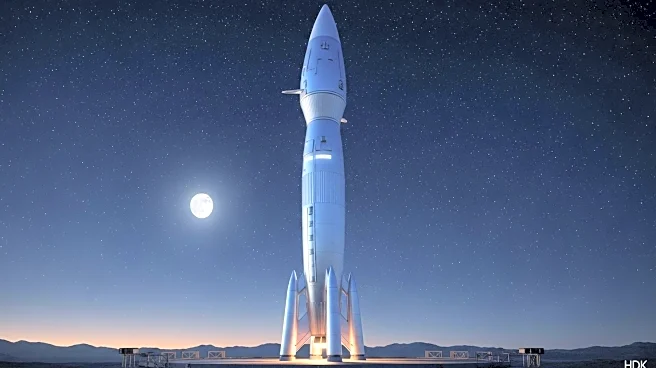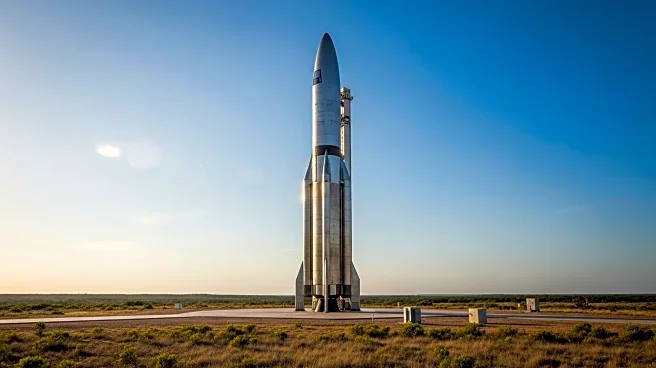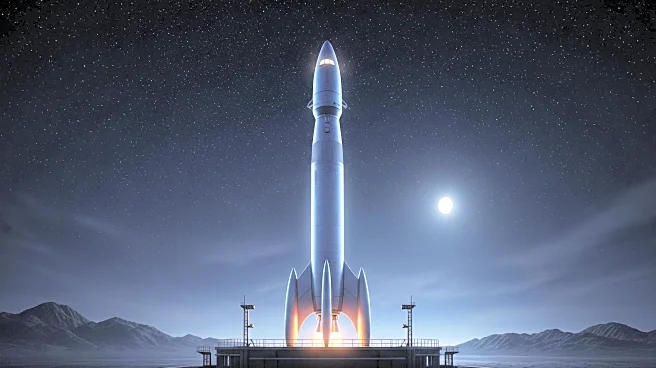What is the story about?
What's Happening?
SpaceX successfully launched its 11th test flight of the Starship rocket from Texas, marking another milestone in its development of a reusable vehicle for future Mars missions and NASA's lunar landing objectives. The rocket, the largest and most powerful ever built, traveled halfway around the world, releasing mock satellites and conducting maneuvering and re-entry tests over the Indian Ocean. This test follows a previous successful flight in August, which was preceded by several failures. SpaceX is also modifying its Cape Canaveral launch sites to accommodate Starships, alongside the smaller Falcon rockets used for NASA missions to the International Space Station.
Why It's Important?
The successful test flight of SpaceX's Starship is crucial for NASA's plans to land astronauts on the moon by the end of the decade. The Starship's ability to transport astronauts from lunar orbit to the surface and back is essential for these missions. Additionally, SpaceX's advancements in reusable rocket technology could significantly reduce the cost of space travel, making it more accessible and sustainable. This development also supports SpaceX's long-term goal of enabling human colonization of Mars, potentially transforming space exploration and expanding human presence beyond Earth.
What's Next?
SpaceX will continue to refine the Starship's design and conduct further tests to ensure its reliability for future missions. NASA will closely monitor these developments as they are integral to its lunar mission timeline. SpaceX's modifications at Cape Canaveral will facilitate more frequent launches, supporting both lunar and Mars exploration goals. The success of these tests may also influence other space agencies and private companies to invest in reusable rocket technology, potentially accelerating advancements in space travel.
Beyond the Headlines
The progress of SpaceX's Starship could have broader implications for international space collaboration, as reusable rockets may become a standard for future missions. This could lead to increased cooperation between countries and private entities in space exploration, fostering innovation and shared goals. Additionally, the environmental impact of reusable rockets is less than traditional expendable rockets, aligning with global sustainability efforts.
AI Generated Content
Do you find this article useful?













